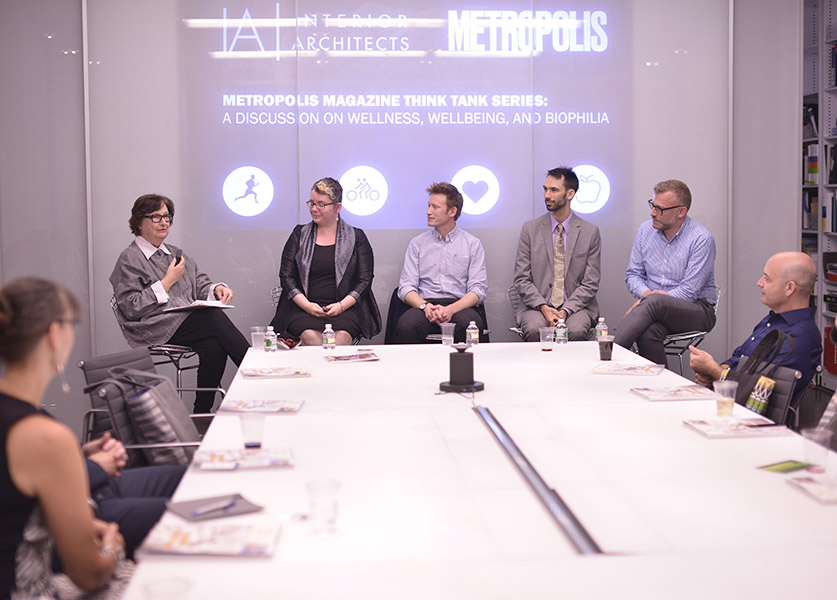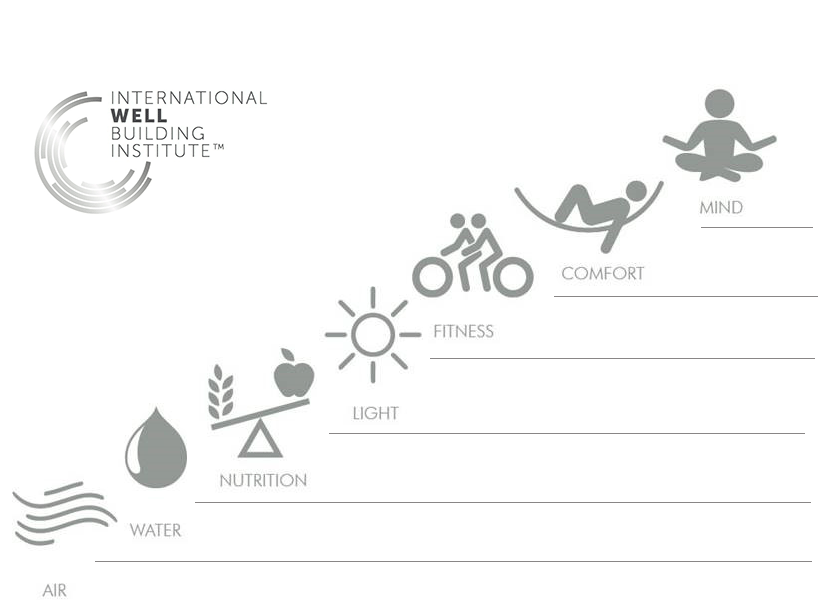In New York, IA hosts a think tank with Metropolis magazine, the International WELL Building Institute, and LinkedIn.

In September, Susan Szenasy, Metropolis magazine editor in chief, hosted a think tank with IA Design Director John Capobianco, IIDA, LEED AP; IA Architect Diane Rogers, AIA, IIDA, LEED AP, WELL AP; Workplace Site Manager at LinkedIn New York, Chris Butterick; and the Vice President of Product Development with the International WELL Building Institute, Nathan Stodola. Topics of discussion included themes regarding wellness in the workplace and the way principles of biophilia can affect human experience of the built environment.
“What we’re talking about today is my favorite subject: human-centered design,” Szenasy said at the start of the conversation. “We’re seeing a grassroots movement toward the inclusion of every human, talent, and skill.”
Sections of the panel focused on ways biophilic principles can affect workplace design. “Biophilia is much more than adding plants to a space: Biophilia talks about our connection to the world of living things,” Rogers says. “It’s a good framework for the design process because it gets you contemplating about what users of the space need.”

Butterick overlooked terminology in favor of the application of biophilic fundamentals. “Of all our projects I’ve worked on with LinkedIn, we have never specifically focused on the term biophilia, but when I looked back on the projects, we’re already doing these things,” he explains. “We’re designing for people to feel healthy, supported, and in an environment that respects what they need as humans.”
Capobianco, who worked with Butterick on LinkedIn’s 28th floor in New York, echoes his sentiment and reveals that starting the client conversation around user-centric design principles—which indirectly involves wellness ideas that can include biophilia—is a starting point at IA. “With or without a conversation with a client, we always apply biophilic principles because it’s human-focused.”
Where Does Biophilia Fit?
How can designers talk about wellness and biophilia with clients, in a way that helps them explain those ideas with their peers? The conversation often starts when one of the “hot” workplace topics comes into play: Providing workers with options and choices of where to work. “Some sort of connection [to nature] and variability is important in a building,” Stodola says. “Two features in the [WELL Building] standard specifically address this, and describe what [designers of the workplaces] are doing with light, nature, and patterns.”
The WELL Standard differs in that its primary focus is providing metrics for ways the built environment affects building occupants: LEED focuses on the measurement of building systems and materials. The WELL standard zeroes in on seven primary tenets.
- Air
- Water
- Nutrition
- Light
- Fitness
- Comfort
- Mind

While areas such as air, water, and light are relatively self-explanatory, others require a bit more digging. In part, Comfort explores climate zones, backed up by medical data to which Rogers was exposed in her WELL accredited training. Skin—the largest organ of the human body—has an acute sense of change, down to .03 degrees; when it comes to controlling room temperature you literally cannot please everyone. In workplace design, Comfort often translates to individual climate zones to accommodate varying preferences.
One of the preconditions of the Mind section is awareness of the WELL standard on the part of the building occupants. “That includes everything from living walls to air systems to [where in the building you can] access drinking water,” Stodola explains. “Many parts of the standard directly affect employees, so having these [guidelines] helps everyone in the space realize that they have options.”
IA is a global firm of architects, designers, strategists, and specialists. We focus exclusively on environments through the lens of interior architecture—a radical idea in 1984, when IA was founded. We are highly connected agents of change, committed to creativity, innovation, growth, and community.
IA is a global firm of architects, designers, strategists, and specialists. We focus exclusively on environments through the lens of interior architecture—a radical idea in 1984, when IA was founded. We are highly connected agents of change, committed to creativity, innovation, growth, and community.


